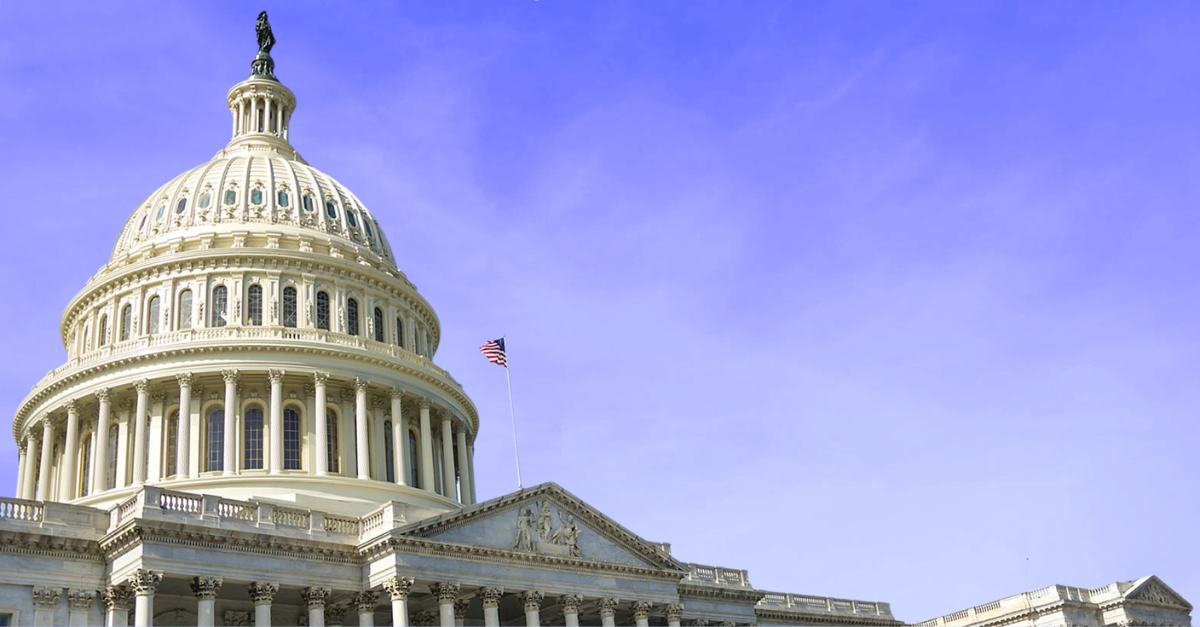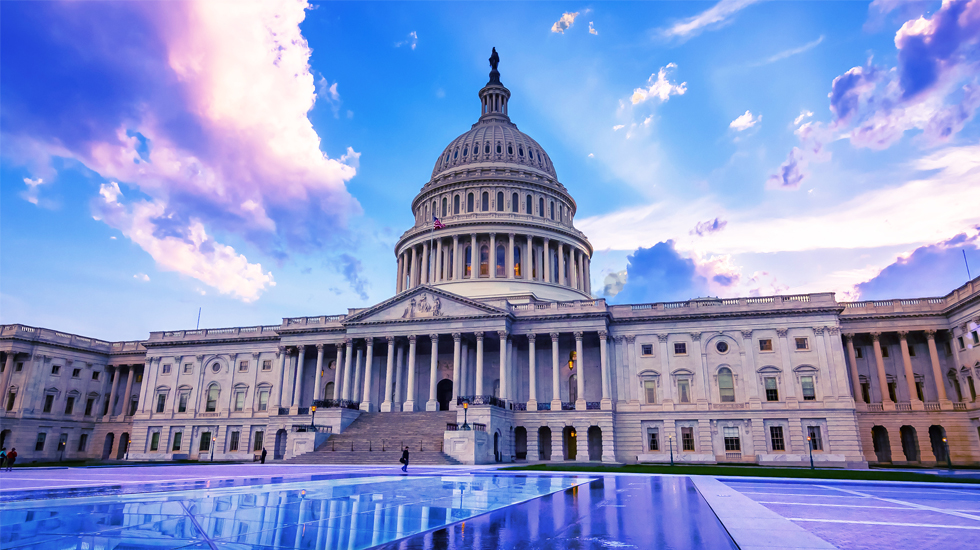GENIUS Act: Payment Stablecoin Framework – Senate Approves
Bill now moves to the House for consideration

KPMG Regulatory Insights
- First Steps: Senate passage of the GENIUS Act is a first step toward establishing a regulatory framework for stablecoins; potential for revisions based on House review.
- Regulatory Clarity: Intent of the bill is to bring regulatory clarity to the digital assets market, including consumer protections, to promote adoption and integration with the financial system.
- More to Come: There is likely to be a series of crypto-related legislation forthcoming.
- Broad Impacts: Widespread adoption of payment stablecoins will have wide-ranging impacts, including to banks, retailers, etc.
June 2025
The U.S. Senate has passed S.1582, the Guiding and Establishing National Innovation for U.S. Stablecoins Act (referred to as the GENIUS Act), with the bill now moving to the U.S. House of Representatives for consideration. This bill seeks to establish a regulatory framework for “payment stablecoins” – generally defined as digital assets redeemable at a fixed monetary value and used for payments or settlement.
Among the provisions, the Act sets forth:
- Permitted Payment Stablecoin Issuers
- Requirements for Issuing Payment Stablecoins
- Capital, Liquidity and Risk Management Requirements
- Bank Secrecy Act and Sanctions Laws
- Other Provisions
Notably, the House Financial Services Committee has advanced a similar stablecoin bill, the Stablecoin Transparency and Accountability for a Better Ledger Economy Act (the STABLE Act), but it has not yet gone to the full House for consideration. It is not clear how the House will proceed – including whether it will take up the GENIUS Act or continue with the STABLE Act.
1. Permitted Payment Stablecoin Issuer. The GENIUS Act (hereinafter referred to as the Bill) would identify three categories of “permitted payment stablecoin issuers," including:
- Subsidiaries of insured depository institutions (IDIs), subject to approval by the relevant “Federal payment stablecoin regulator” (the primary Federal regulator of the IDI)
- “Federal qualified payment stablecoin issuers,” defined to include nonbank entities (other than a State qualified payment stablecoin issuer), OCC-chartered uninsured national banks, and Federal branches that have been approved by the OCC
- “State qualified payment stablecoin issuers,” defined to include entities that are established under State laws and approved to issue payment stablecoins by a “State payment stablecoin regulator”
Federal payment stablecoin regulators. In coordination with one another, Federal payment stablecoin regulators (defined to include the Federal Reserve Board (FRB), Federal Deposit Insurance Corporation (FDIC), Office of the Comptroller of the Currency (OCC), and the National Credit Union Administration (NCUA)) would be required to issue regulations to establish a payment stablecoin regulatory framework within one year of enactment, including provisions to:
- Receive, review, and consider for approval applications from any IDI that seeks to issue payment stablecoins through a subsidiary, and any nonbank, uninsured national bank, or Federal branch that seeks to issue payment stablecoins
- License, regulate, examine, and supervise Federal payment stablecoin issuers
State payment stablecoin regulators. State payment stablecoin regulators would be permitted to issue orders and rules to same extent as the primary Federal payment stablecoin regulators.
State qualified payment stablecoin issuers with a consolidated total outstanding issuance of not more than $10 billion would be allowed to opt for State-level regulation, provided the State-level regime is “substantially similar” to the Federal regulatory framework. However, State qualified payment stablecoin issuers with a consolidated total outstanding issuance of more than $10 billion would be required to transition to the Federal regulatory framework (to be administered jointly by the State and Federal regulators); those that are State chartered depository institutions would be subject to oversight by the primary Federal payment stablecoin regulator of the State chartered depository institution, while all other State qualified payment stablecoin issuers would be subject to oversight by the State and the OCC.
2. Requirements for Issuing Payment Stablecoins. Permitted payment stablecoin issuers would be required to:
- Maintain reserves backing the outstanding payment stablecoins of the permitted payment stablecoin issuer on an at least 1 to 1 basis (to include U.S. dollars, short-term Treasuries, etc.)
- Publicly disclose the issuer’s redemption policy, including all fees associated with purchasing or redeeming the payment stablecoins
- Publish the monthly composition of the issuer’s reserves on the website of the issuer, including total outstanding payments stablecoins issued and the amount and composition of the reserves
- Have each monthly report examined by a registered public accounting firm
- Provide certification, monthly, as to the accuracy of the monthly report to, as applicable, the primary Federal payment stablecoin regulator or the State payment stablecoin regulator. The certification is to be submitted by the Chief Executive Officer and Chief Financial Officer.
- Provide for annual audited financial statements (for issuers with more than $50 billion in consolidated total outstanding issuances)
- Comply with capital, liquidity, and risk management requirements (see below)
- Comply with Bank Secrecy Act and sanctions laws (see below)
Limitations of payment stablecoin activities. Permitted payment stablecoin issuers would be limited to the following activities:
- Issuing payment stablecoins
- Redeeming payment stablecoins
- Managing related reserves, including purchasing, selling, and holding reserve assets or providing custodial services for reserve assets
- Providing custodial or safekeeping services for payment stablecoins, required reserves, or private keys of payment stablecoins
- Undertaking other activities that directly support any of the permitted activities
- Other activities authorized by the primary Federal or State regulator
3. Capital, Liquidity, and Risk Management Requirements. Within twelve months of enactment, the primary federal payment stablecoin regulators (as defined) would be required to issue regulations implementing:
- Capital requirements applicable to permitted payment stablecoin issuers, tailored to the business model and risk profile of the permitted payment stablecoin issuer, including capital buffers, as appropriate
- Liquidity standards
- Reserve asset diversification (including deposit concentration at banking institutions, and interest rate risk management standards)
- Operational, compliance, and information technology risk management principles-based requirements and standards (including Bank Secrecy Act and sanctions compliance standards)
4. Bank Secrecy Act and Sanction Laws. Permitted payment stablecoin issuers would be treated as “financial institutions” for purposes of Bank Secrecy Act and all Federal laws applicable to a financial institution located in the United States relating to:
- economic sanctions
- prevention of money laundering
- customer identification
- due diligence
Requirements under these laws include, as appropriate:
- An effective anti-money laundering and economic sanctions compliance program
- Records retention requirements
- Monitoring and reporting suspicious transactions
- Policies and procedures to block, freeze, and reject specific or impermissible transactions that violate Federal or State laws, rules, or regulations
- An effective customer identification program, including identification and verification of account holders with the permitted payment stablecoin issuer, high-value transactions, and appropriate enhanced due diligence.
5. Other Provisions. Among other provisions, the Bill also addresses:
- Marketing: The Bill would prohibit marketing of products in the United States as payment stablecoins unless they are issued pursuant to the Act. Further, a payment stablecoin could not be marketed in such a way that a reasonable person would perceive the payment stablecoin to be (i) a legal tender, (ii) issued by the United States; or (iii) guaranteed or approved by the Government of the United States.
- Bankruptcy: In the case of the insolvency of a permitted payment stablecoin issuer, stablecoin holders would be provided with a priority claim against the estate over other creditors.
- Custody: IDIs would be permitted to provide custodial services for payment stablecoins, private keys of payment stablecoins, or reserves backing payment stablecoins. The Federal banking agencies, the NCUA, and the Securities and Exchange Commission could not require financial entities to report digital assets held in custody, but not owned, as liabilities.
- Public Companies: Non-financial public companies would not be approved to issue payment stablecoins unless they meet certain financial risk and consumer data privacy protections.
Dive into our thinking:
GENIUS Act: Payment Stablecoin Framework – Senate Approves
Bill now moves to the House for consideration
Download PDFExplore more
Subscribe to receive regulatory and compliance transformation insights
By registering you will periodically receive additional compliance-related communications from KPMG.


